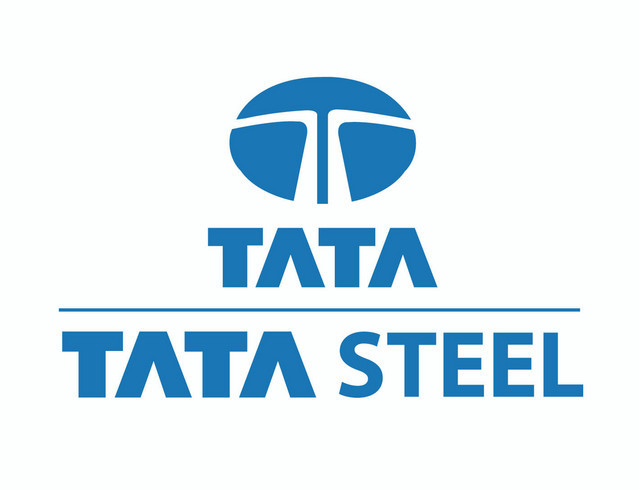
Successful Commissioning of the Greenfield Metallurgical Works at TATA STEEL


Converter platform
In the first phase of Tata Steel's ambitious investment program at the Kalinganagar location in the district of Odisha in India, the converter shop, secondary metallurgy facilities and a continuous slab caster were put successfully into operation in March 2016. The integrated iron and steel plant of Tata Steel is designed for an annual production of more than six million tons of steel slabs.
The SMS group supply scope comprised a twin station hot-metal desulphurization plant, a converter shop featuring an Ecoplants gas cleaning and recovery plant, a CAS-OB unit (Composition Adjustment by Sealed argon bubbling - Oxygen Blowing), RH degasser (Ruhrstahl-Heraeus) and a two-strand slab caster. SMS group also supplied the complete X-Pact® electrical and automation package inclusive of Level 2.
The process routes in the steel plant are extremely flexible: the steel can be treated in the secondary metallurgical plant CAS-OB and/or RH facility. This ensures the manufacture of a large variety of steel grades.
The first of three converters, each with a capacity of 310 tons, has gone into operation in the new converter shop. SMS group supplied the converter vessel, the trunnion ring, the vessel-to-ring lock system with the patented lamella suspension system of the latest generation, the tilt drive, material charging facilities and further auxiliary plants. The converter is equipped with a bottom stirring system, which is necessary for the manufacture of several highly demanding steel grades.
The Ecoplants gas cleaning plant is equipped with the Baumco CO system. This enables a large proportion of the chemical energy contained in the molten metal in the form of carbon to be recovered as carbon monoxide (CO) gas during the converter process. The primary gases are cleaned by a venturi scrubber in two stages. The gas recovery plant feeds the gas back into the works network. The plant thus pays for itself in a short time.
In the CAS-OB facility, inert gas is used to create a slag-free area at the melt surface into which a refractory bell is inserted. Alloys can now be added into the steel under an inert atmosphere and without recovery loss to the slag or atmosphere. The addition of aluminum and the blowing of oxygen onto the surface of the steel inside the bell create an exothermic chemical reaction which increases the temperature of the steel. The addition of alloys under an inert atmosphere, and the ability to stir the melt after chemical heating, helps to improve the cleanness and homogenization of the steel.
In the RH degasser the steel is subjected to vacuum treatment to perform metallurgical tasks such as hydrogen removal or decarburization. The TOP lance facility of the degasser also allows chemical heating of the steel by exothermic reaction between oxygen and aluminum. Furthermore, the TOP lance incorporates the ability to blow powder for limited desulphurization at the RH unit.
The two-strand vertical-bend continuous caster supplied by SMS group is designed for the production of quality slabs in a thickness of 230 millimeters and widths between 1,000 and 2,000 millimeters. The maximum casting speed of the highly productive caster is 1.9 meters per minute.
The caster equipment includes several ISC® modules (Intelligent Slab Casting) which determine quality and production. Among these are the hydraulically powered resonance oscillation system, remote-controlled mold narrow faces for width change during casting and the position-controlled CYBERLINK segments for performing Dynamic Soft Reduction.
The production of slabs of high internal quality is thus guaranteed in combination with the width-dependent air-mist secondary cooling and the technological Dynamic Solidification Control process model.
The second converter and the RH facility will be commissioned in 2016.

Continuous slab caster with two strands


Trump weighs using $2 billion in CHIPS Act funding for critical minerals

Codelco cuts 2025 copper forecast after El Teniente mine collapse

Electra converts debt, launches $30M raise to jumpstart stalled cobalt refinery

Barrick’s Reko Diq in line for $410M ADB backing

Abcourt readies Sleeping Giant mill to pour first gold since 2014

Nevada army depot to serve as base for first US strategic minerals stockpile

SQM boosts lithium supply plans as prices flick higher

Viridis unveils 200Mt initial reserve for Brazil rare earth project

Tailings could meet much of US critical mineral demand – study

Kyrgyzstan kicks off underground gold mining at Kumtor

Kyrgyzstan kicks off underground gold mining at Kumtor

KoBold Metals granted lithium exploration rights in Congo

Freeport Indonesia to wrap up Gresik plant repairs by early September

Energy Fuels soars on Vulcan Elements partnership

Northern Dynasty sticks to proposal in battle to lift Pebble mine veto

Giustra-backed mining firm teams up with informal miners in Colombia

Critical Metals signs agreement to supply rare earth to US government-funded facility

China extends rare earth controls to imported material

Galan Lithium proceeds with $13M financing for Argentina project

Kyrgyzstan kicks off underground gold mining at Kumtor

Freeport Indonesia to wrap up Gresik plant repairs by early September

Energy Fuels soars on Vulcan Elements partnership

Northern Dynasty sticks to proposal in battle to lift Pebble mine veto

Giustra-backed mining firm teams up with informal miners in Colombia

Critical Metals signs agreement to supply rare earth to US government-funded facility

China extends rare earth controls to imported material

Galan Lithium proceeds with $13M financing for Argentina project

Silver price touches $39 as market weighs rate cut outlook

















